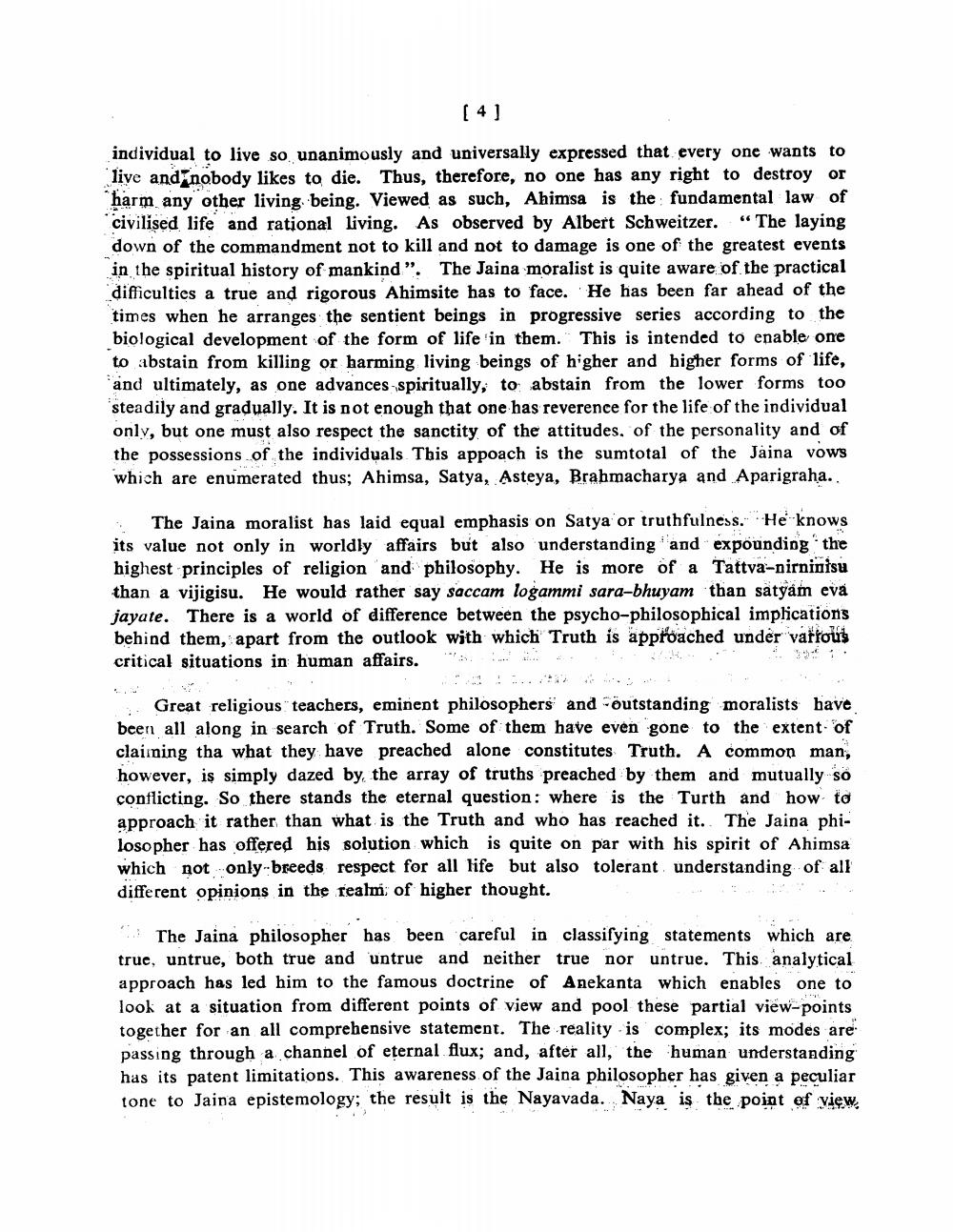________________
individual to live so unanimously and universally expressed that every one wants to live and nobody likes to die. Thus, therefore, no one has any right to destroy or harm any other living being. Viewed as such, Ahimsa is the fundamental law of civilised life and rational living. As observed by Albert Schweitzer. “The laying down of the commandment not to kill and not to damage is one of the greatest events in the spiritual history of mankind". The Jaina moralist is quite aware of the practical difficulties a true and rigorous Ahimsite has to face. He has been far ahead of the times when he arranges the sentient beings in progressive series according to the biological development of the form of life in them. This is intended to enable one to abstain from killing or harming living beings of higher and higher forms of life, and ultimately, as one advances-spiritually, to abstain from the lower forms too steadily and gradually. It is not enough that one has reverence for the life of the individual only, but one must also respect the sanctity of the attitudes, of the personality and of the possessions of the individuals. This appoach is the sumtotal of the Jaina vows which are enumerated thus; Ahimsa, Satya, Asteya, Brahmacharya and Aparigraha..
The Jaina moralist has laid equal emphasis on Satya or truthfulness. He knows its value not only in worldly affairs but also understanding and expounding the highest principles of religion and philosophy. He is more of a Tattva-nirninisu than a vijigisu. He would rather say saccam logammi sara-bhuyam than satyám eva jayate. There is a world of difference between the psycho-philosophical implications behind them, apart from the outlook with which Truth is approached under various critical situations in human affairs.
.
Great religious teachers, eminent philosophers and outstanding moralists have been all along in search of Truth. Some of them have even gone to the extent of claining tha what they have preached alone constitutes Truth. A common man, however, is simply dazed by the array of truths preached by them and mutually so conflicting. So there stands the eternal question: where is the Turth and how to approach it rather than what is the Truth and who has reached it. The Jaina philosopher has offered his solution which is quite on par with his spirit of Ahimsa which not only-breeds respect for all life but also tolerant understanding of all different opinions in the realm of higher thought.
The Jaina philosopher has been careful in classifying statements which are true, untrue, both true and untrue and neither true nor untrue. This analytical approach has led him to the famous doctrine of Anekanta which enables one to look at a situation from different points of view and pool these partial view-points together for an all comprehensive statement. The reality is complex; its modes are passing through a channel of eternal flux; and, after all, the human understanding has its patent limitations. This awareness of the Jaina philosopher has given a peculiar tone to Jaina epistemology; the result is the Nayavada. Naya is the point of view,




